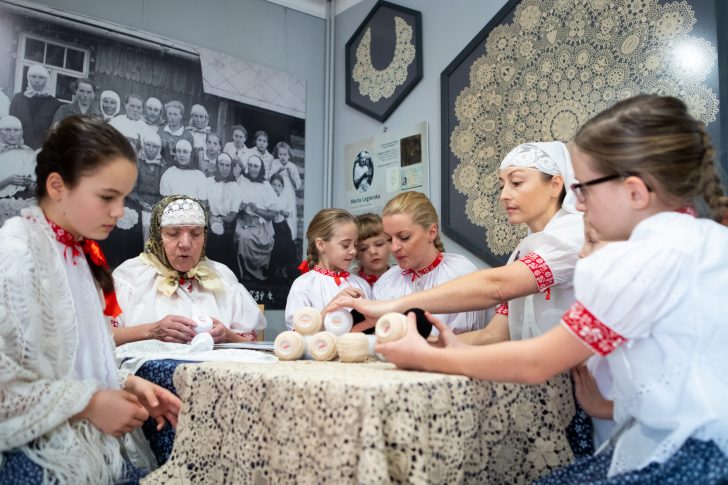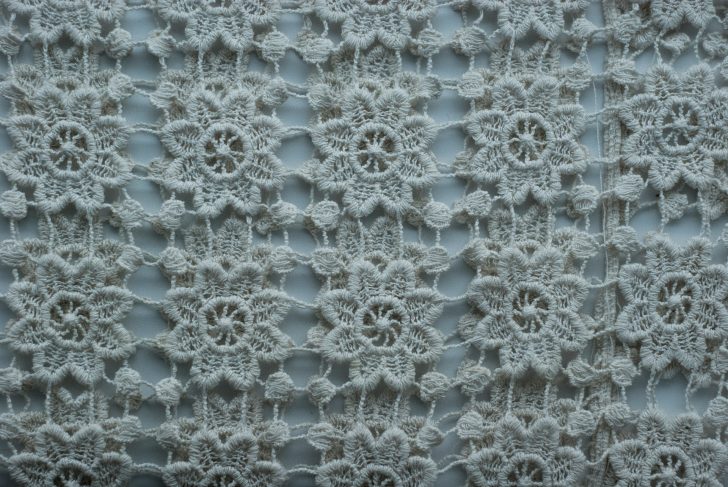Lace crochet in Koniaków is an identity, tradition, and now, big business. Tucked in the Beskid Mountains of southern Poland, the village of Koniaków has been crocheting lace by hand for over 150 years. What started as bonnet ribbons made by married women is now featured in Paris Fashion Week and global lingerie lines.
Back then, women tied lace ribbons around their heads as part of folk dress, marking them as married. These weren’t just decorations. They told stories, showed heritage, and connected families. Over time, this lace-making turned into a way to earn a living.
In the early 1900s, lace crochet shifted. Women started creating tablecloths, napkins, and home décor. The craft went from tradition to trade. Circular shapes became the standard, and the intricate patterns spread beyond homes and into shops.

The flowers, stars, and swirls come straight from their surroundings, the peaks, trees, and light of the Beskid Mountains.
This freestyle method means no two pieces are alike. Artisans stitch separate motifs by hand, then join them with tiny connectors called “spiders.” These are star-like or round joins that hold everything together. The result looks like snowflakes or frozen blossoms, delicate but strong. The work is slow, and that is the whole point.
One artist, Zuzanna Ptak, once said she imagines the sun glowing behind a mountain when she crochets.
From Folk Art to Lingerie
Then came 2003, and everything changed. That year, the women of Koniaków shocked Poland by using their lace for lingerie. Yes, bras, panties, thongs, and even G-strings. Traditional motifs showed up in bold new forms. Some called it disrespectful. Others called it genius. Either way, it worked.
Smaller pieces meant quicker production. Faster sales. And modern appeal. The lace was pretty and provocative. News outlets jumped on the story. Headlines like “Lace and Licentiousness” and “Veruschka’s Secret” spread across Europe. Suddenly, the world was watching Koniaków.
Fashion houses took notice. Christian Dior, Dolce & Gabbana, and Magda Butrym all incorporated Koniaków lace into their collections. Japanese designer Rei Kawakubo of Comme des Garçons even ordered hundreds of pieces, though she underestimated how long hand-crafted lace takes.

Wedding dresses sell for thousands more. And people don’t blink at the price. They know it is worth it. Each lace piece is a slow, quiet protest against mass production. It is fashion without shortcuts. Craft without compromise. Koniaków lace says: We make it how we always have, and now the world wants in.
The economic impact has been huge. What used to be “extra money for the house” is now real income. Around 700 women in Koniaków are professional lace makers today.
In 1947, things got organized. A woman named Maria Gwarek started a cooperative so lacemakers could work together and sell better. Later, during the communist era, government-run Cepelia shops sold lace all across Poland. Today, the Koniaków Lace Center, built in 2019, acts as a museum, store, and training center.




